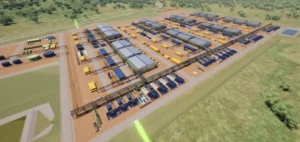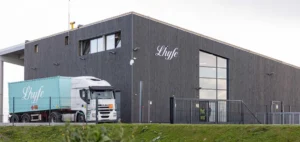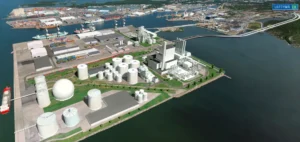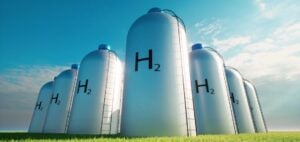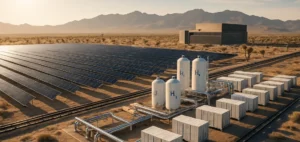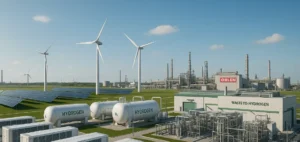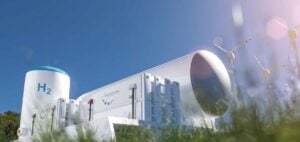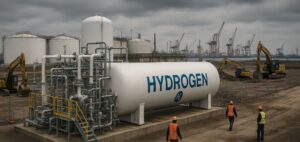In a major development for China’s energy landscape, state-owned oil giants Sinopec and PetroChina have unveiled plans to establish robust supply chains for the production, distribution and consumption of green hydrogen. Drawing on the successful natural gas sector, these ambitious strategies and infrastructure frameworks mark the critical role these companies will play in the development of China’sgreen hydrogen industry.
The rise of green hydrogen: Sinopec and PetroChina at the heart of China’s energy revolution
Both Sinopec and PetroChina, recognized as two of the world’s largest energy companies, have substantial capital bases and extensive project expertise in capital-intensive development. These factors put them in a favorable position to drive the growth of China’s green hydrogen sector and align it closely with the country’s long-term energy transition plans. This convergence is already evident with the early use of green hydrogen in areas such as refining and transportation, mirroring the trajectory taken by natural gas.
Zou Caineng, PetroChina’s chief new energy specialist, stressed the importance of building a comprehensive ecosystem for green hydrogen, similar to that existing in the natural gas industry. “We have entered the golden age of hydrogen,” Zou said confidently, emphasizing the need to build large green hydrogen production sites simultaneously with gas field development. Zou also predicted that China’s green hydrogen industry has the potential to surpass the natural gas industry in size and importance.
According to Lin Wei, deputy director of Sinopec’s Petroleum Processing Research Institute, hydrogen can be used effectively in a variety of emission-intensive sectors, including power generation, industrial production and transportation. Bridging the gap between green hydrogen producers and demand centers is becoming critical to achieving a sustainable balance between supply and demand.
China leads in the adoption of hydrogen vehicles
As part of their hydrogen strategies, Sinopec announced the creation of an expert advisory council for hydrogen deployment, including representatives from fuel cell manufacturers, storage companies and technology researchers. This collaborative approach aims to foster innovation and cooperation between different industry segments to accelerate the adoption of green hydrogen.
A key aspect of the National Oil Companies’ (NOC) hydrogen strategy is to leverage existing transportation fuel supply networks. By converting gasoline and diesel refueling stations, whose use is declining due to the rise of electric vehicles, Sinopec aims to lay the foundation for a robust network of hydrogen refueling stations.
Currently, China has the largest number of hydrogen fuel cell vehicles (FCEVs) in the world, with 19% of the 67,000 FCEVs in operation located in the country. Similarly, China is home to 49% of the world’s 727 hydrogen refueling stations.
Wang Weimin, senior specialist at Sinopec, revealed plans to build a hydrogen pipeline from Ulanqab in Inner Mongolia to Beijing, which will serve as a pilot project. This initiative is part of Sinopec’s goal to develop hydrogen refueling networks and related infrastructure ahead of the expected increase in FCEV demand.
Industrial decarbonization: green hydrogen transforms China’s energy future
Last year, Sinopec announced ambitious plans to increase its hydrogen fueling capacity to 120,000 metric tons per year by 2025, up from 20,000 metric tons per year in 2022. The company aims to produce hydrogen from renewable sources as well as from natural gas, methanol and ammonia. It is important to note that China is currently the world’s largest producer of hydrogen, with an annual production of 33 million metric tons, mostly from coal and industrial processes such as refining.
The deployment of hydrogen in the energy sector offers a promising solution to replace coal and decarbonize complex industrial processes such as steel production, ammonia synthesis and methanol synthesis. Local and domestic production of hydrogen is expected to reduce dependence on imports, thereby addressing critical energy security issues.
The successful integration of green hydrogen into the Chinese energy landscape requires strict safety standards. Cao Xianghong, a member of the Chinese Academy of Engineering, emphasized the importance of controlling safety measures in the production, distribution and consumption of hydrogen. Building on the lessons learned from the natural gas industry, it is essential to establish a solid framework to ensure the safe and effective development of the green hydrogen sector.
China’s state-owned oil giants are at the forefront of the nation’s transition to a greener, more sustainable energy future. By capitalizing on their vast resources, expertise and existing infrastructure, Sinopec and PetroChina are poised to transform China’s energy landscape and make a significant impact on the global stage. As China embraces the golden age of hydrogen, it is expected to build an ecosystem for green hydrogen that rivals the natural gas industry in scale and importance.


